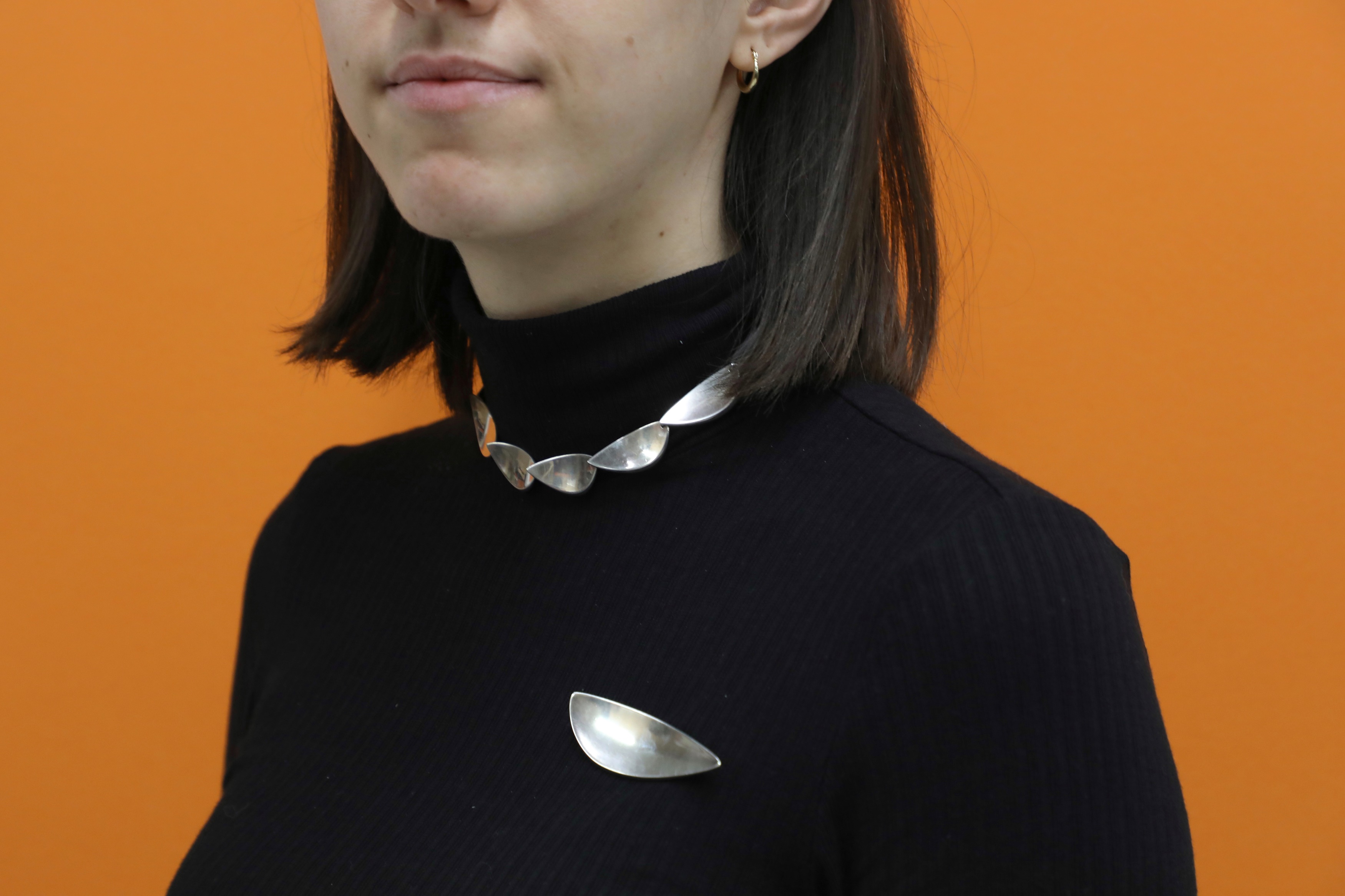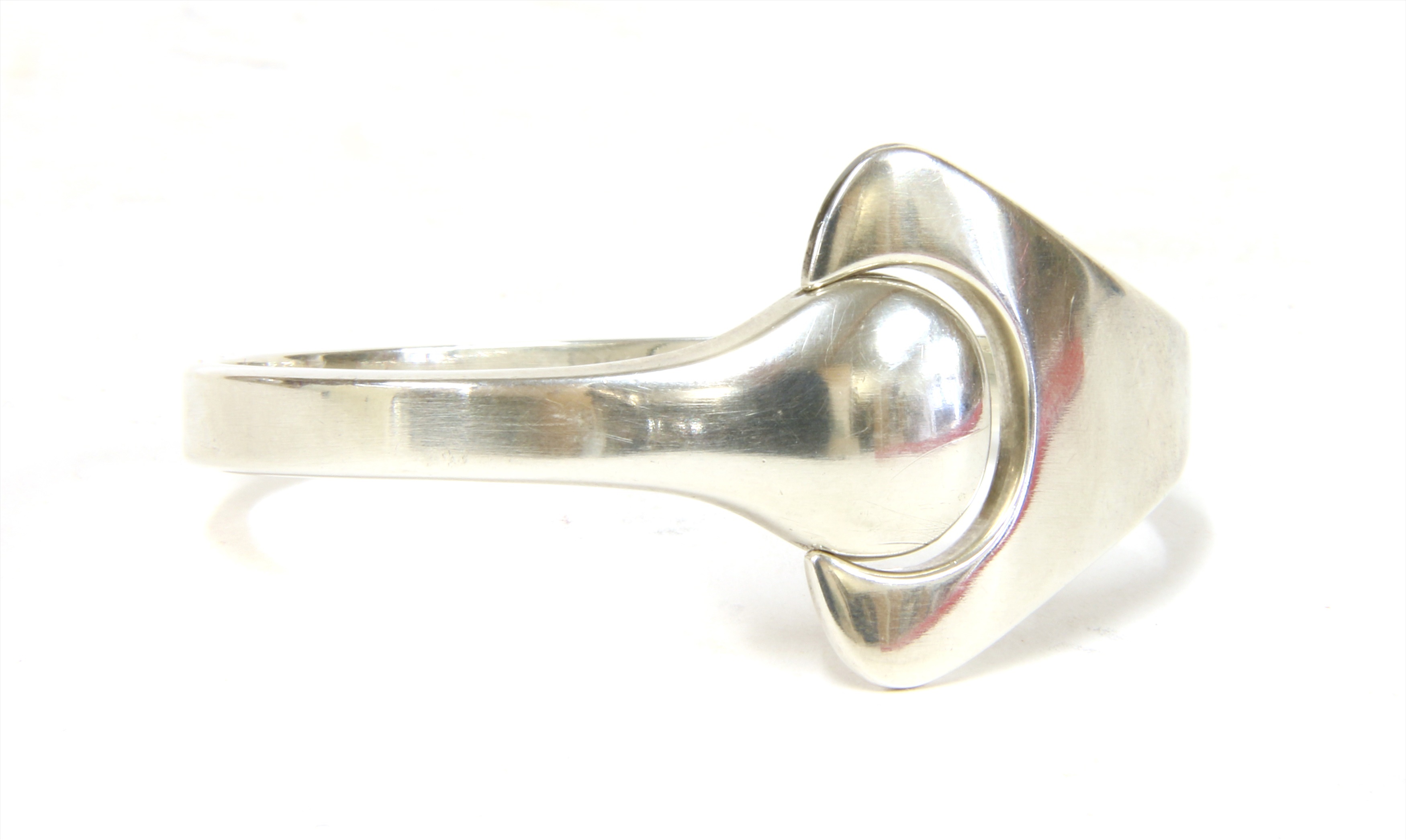Hans Hansen
Hans Hansen (1884-1940) trained as a silversmith in the Carl M. Cohrs Silverware Factory in 1903, and worked there until 1906 when he set up his own workshop on the Jutland Peninsula in Denmark, focusing on production of the hollowware and flatware in which he was trained. The firm of Hans Hansen did not establish its reputation for the refined modernist silver jewellery it is now known for until Hansen’s son, Karl Gustav Hansen, joined the firm as an apprentice in 1932...

Hans Hansen (1884-1940) trained as a silversmith in the Carl M. Cohrs Silverware Factory in 1903, and worked there until 1906 when he set up his own workshop on the Jutland Peninsula in Denmark, focusing on production of the hollowware and flatware in which he was trained. The firm of Hans Hansen did not establish its reputation for the refined modernist silver jewellery it is now known for until Hansen’s son, Karl Gustav Hansen, joined the firm as an apprentice in 1932. He designed a line of simple, functional jewellery called ‘Future’ featuring brooches, earrings, and rings, which sold successfully for at least a decade, and at age twenty five took over the running of the firm upon the death of his father.
Hansen also employed other well-known Danish modernist designers, cementing the firm’s place among mid-century Scandinavian silver producers. Bent Gabrielsen Pedersen worked there between 1953 and 1969 and was artistic director from 1962, during which time he won the Lunning prize (thought of as the ‘Nobel’ prize for Scandinavian design) and a gold medal for design at the Milan Triennial, as well as Bent Knudsen, and Allan Scharf, who was the leading designer by the 1980s before going on to design for Georg Jensen.

The company was taken over by the Royal Scandinavia Group in 1991, and so merged with Georg Jensen, under which name many Hansen designs are still being produced.
All Hansen pieces will feature one of the company marks; either HaH, a small H within a larger H, or Hans Hansen in a facsimile signature script. All three marks have been used throughout the history of the company, and the type applied will depend on the size of the piece. As such, it is not possible to use the marks to assist in the dating of a Hansen piece, as it would be with other designers whose marks evolved (e.g. Jensen). Similarly, the pieces are not signed with the name of the designer, but familiarity with the work and styles of those who designed for Hansen can assist with identification.
Recent News
Peter Petrou | Outward Bound
Our upcoming auction 'Peter Petrou | Outward Bound' will be held on Tuesday 24 February 2026.
The Year in Review | A Look Back at 2025
Join us as we look back at some of the most notable highlights from our 2025 sales and celebrate another excellent year.
18 December 2025
In Good Order | The Expert Redefining the Art of Moving
Founder of The Professional Organiser, Cornelia De Uphaugh, shares her process and philosophy through a series of interview questions.
18 December 2025